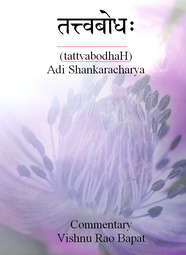From 2015 to 2017, I posted a series of ‘Notes on Tattvabodha’ (31 parts) by Dr. Vishnu Bapat. (Beginning at https://www.advaita.org.uk/discourses/bapat/bapat01.html.) These provided word by word translations of the Devanagari Sanskrit as well as an English commentary.
Dr. Bapat now has his own site at Vishnu Rao Bapat – Soulbliss where he has continued this practice and has similar translations of Bhagavad Gita, Atma Bodha, Dakshinamurti Stotram, Bhaja Govindam, Astavakra Gita, Amrita Bindu Upanishad and Devi Stotram.
Here, as an example, are two verses from the Bhagavad Gita.
Continue reading
